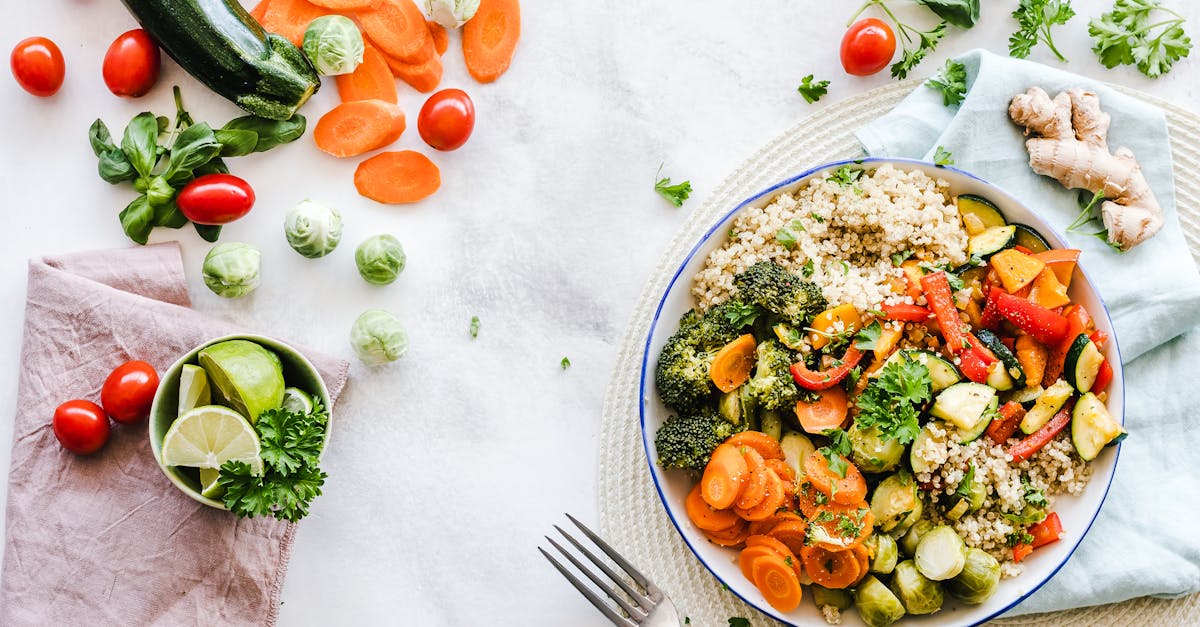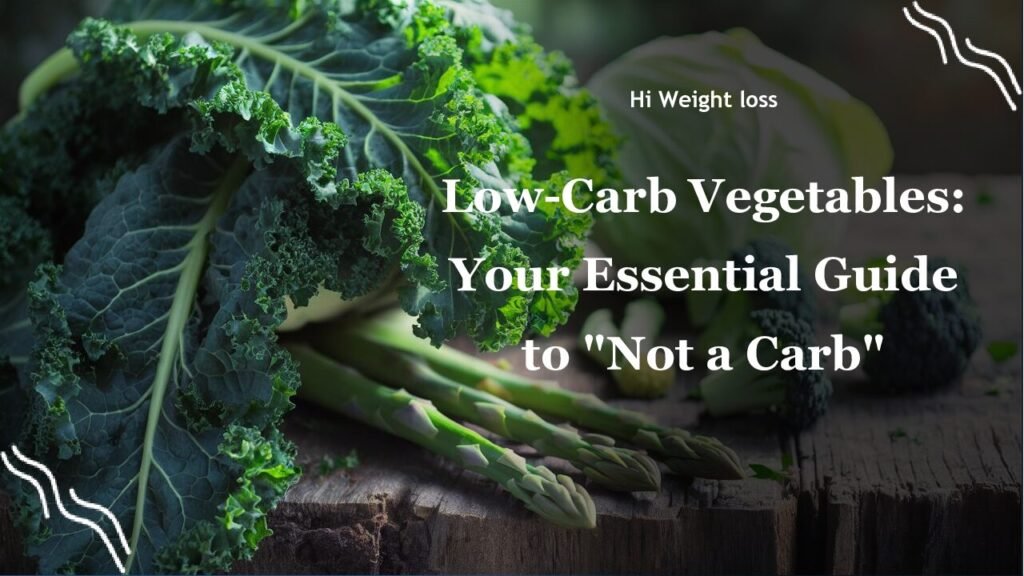“`
Feeling confused about which vegetables are truly “not a carb?” It’s a common misconception that some veggies are entirely carb-free, but the truth is, all vegetables contain some carbohydrates. However, some are significantly lower in carbs than others and are often referred to as *non-starchy vegetables*, making them ideal for diets like low-carb or keto. This article will clear up the confusion, diving deep into which vegetables are your best bet if you’re watching your carb intake. Let’s explore these low-carb wonders together!
Understanding “Not a Carb”: What Makes a Vegetable Low-Carb?
The phrase “not a carb” is a bit of a misnomer when talking about vegetables. All vegetables contain some carbohydrates. However, when people ask, “What vegetable is not a carb?”, they usually mean “which vegetables are low in carbs?”. The term *non-starchy vegetables* refers to those with lower amounts of carbs compared to their starchy counterparts like potatoes or corn.
It’s helpful to understand that carbohydrates are our bodies’ primary energy source, but in a low-carb or ketogenic diet, the goal is to switch your body’s primary energy source from carbohydrates to fats. This is where these lower-carb vegetables become invaluable. They provide essential vitamins, minerals, and fiber without the high carb load. Do you know which ones you enjoy most?
Key Characteristics of Non-Starchy Vegetables
Non-starchy vegetables generally have a higher water content and are less calorie-dense compared to starchy vegetables. They are also often richer in fiber, which aids in digestion and helps you feel full for longer. This means you can enjoy larger portions without worrying as much about excessive carbohydrate consumption. Think of them as your nutritional allies, keeping you satisfied and healthy on a low-carb journey.
I remember when I first started exploring low-carb eating; I was surprised by the variety of vegetables I could still enjoy. Before, I’d often load up on rice or potatoes at meals, without realizing the impact on my carb intake. Switching to more *non-starchy vegetables* was a game-changer. I felt better, more energetic, and my weight management became much easier.
Top Low-Carb Vegetables to Include in Your Diet
Now, let’s get to the good stuff – specific examples! Here are some excellent options for *low-carb vegetables* that you can incorporate into your meals:
Leafy Greens: These are nutritional powerhouses. For example, kale is incredibly low in carbs, with about 0.07 grams of net carbs per cup! Spinach, lettuce, and other leafy greens are also excellent choices. These are easy to add to salads, stir-fries, or even smoothies.
Cruciferous Vegetables: Vegetables like broccoli are fantastic options, providing about 5 grams of net carbs per cup. Cabbage is another great example, containing approximately 2.31 grams of net carbs and is also a source of vitamin C. I’ve found that roasting them with a bit of olive oil and spices brings out their natural sweetness.
Other Great Choices: Asparagus is another low-carb favorite, offering about 5 grams of net carbs per cup. Other options include cauliflower, zucchini, and bell peppers. The variety makes low-carb eating so much more interesting, don’t you think?

The Importance of Fiber in Non-Starchy Vegetables
Beyond their low-carb content, non-starchy vegetables are rich in fiber. Fiber is essential for digestive health and can help you feel full, which is especially beneficial when following a diet that limits carbs. It also plays a key role in regulating blood sugar levels. The *American Diabetes Association* highlights this benefit, noting that these vegetables are crucial for blood sugar control.
I remember a friend who struggled with constant hunger while trying to reduce carbs. Once she started incorporating more *non-starchy vegetables* into her diet, the constant cravings became much more manageable. The fiber really made a difference. Are you also finding this to be true?
How to Incorporate More Non-Starchy Vegetables
Incorporating these *keto-friendly vegetables* into your diet can be easy and delicious. Try adding leafy greens to your breakfast omelet or creating a vibrant salad for lunch. Roast or grill some broccoli and asparagus as a side dish, or use zucchini in place of noodles in your favorite pasta recipes.
Don’t be afraid to experiment with different flavors and textures. I’ve always enjoyed experimenting with different combinations of vegetables to make simple dishes more exciting and filling. The key is finding what you enjoy and making those choices a part of your daily life.
Comparing Starchy and Non-Starchy Vegetables
To better understand, let’s contrast non-starchy vegetables with their starchy counterparts. Starchy vegetables like potatoes, corn, and peas contain higher levels of carbohydrates and calories per serving. While still nutritious, they should be consumed in moderation if you’re on a *low-carb diet*. Do you know where your favorite vegetables fall on this spectrum?
Here is a simple table to help illustrate the differences:
| Category | Examples | Carbohydrate Content |
|---|---|---|
| Non-Starchy Vegetables | Leafy greens, broccoli, cabbage, asparagus | Lower |
| Starchy Vegetables | Potatoes, corn, peas | Higher |
Additional Resources
For a deeper dive, you can explore resources like the *American Diabetes Association* which offers comprehensive information about non-starchy vegetables and their role in healthy eating. Additionally, *Weight Watchers* provides a list of 20 low-carb vegetables that can help guide you in your food choices. Also, you can refer to the *Wikipedia* article on non-starchy vegetables for even more options.
These links can provide you with the more detail and resources to help you get a handle on what are the best options when you are watching your carbohydrate intake.
Conclusion
So, while no vegetable is completely “not a carb,” focusing on *non-starchy vegetables* is a smart strategy for those following a *low-carb diet* or *keto diet*. These vegetables offer a wealth of nutrients, fiber, and flavor without the high carb load of starchy options. The key is understanding the differences between these two categories and making informed food choices. Think back to the first paragraph, where we acknowledged the common confusion. Now, with this deeper understanding, you’re equipped to make healthier and more informed decisions.
Remember that friend who managed her cravings? Her success, just like yours can be, was rooted in making conscious choices about her vegetable consumption. Start experimenting with some new *low-carb vegetables* this week and see the difference for yourself. If you found this article helpful, please share it with others who might also be curious about low-carb eating. Let’s inspire each other to eat healthier!
FAQ
Are all green vegetables low in carbs?
While many green vegetables are low in carbs, some, like green peas, are higher in carbohydrates. Focus on leafy greens and non-starchy options like broccoli and asparagus.
Can I eat unlimited non-starchy vegetables on a keto diet?
While you can enjoy larger portions of non-starchy vegetables on keto, it’s always important to be mindful of your overall carb intake. Even small amounts of carbs can add up. Moderation is key.
Where can I find a comprehensive list of non-starchy vegetables?
Resources like the *American Diabetes Association* website, *Weight Watchers* blog, and the *Wikipedia* page offer excellent lists of non-starchy vegetables for reference.
How do I calculate net carbs in vegetables?
To calculate net carbs, subtract the fiber content from the total carbohydrate content. This is the amount of carbohydrate that your body will digest and use for energy. Pay attention to serving sizes.
Do non-starchy vegetables offer any health benefits besides being low in carbs?
Absolutely! Non-starchy vegetables are packed with vitamins, minerals, and antioxidants, which are all essential for overall health. They support various bodily functions and help protect against chronic diseases.
“`



